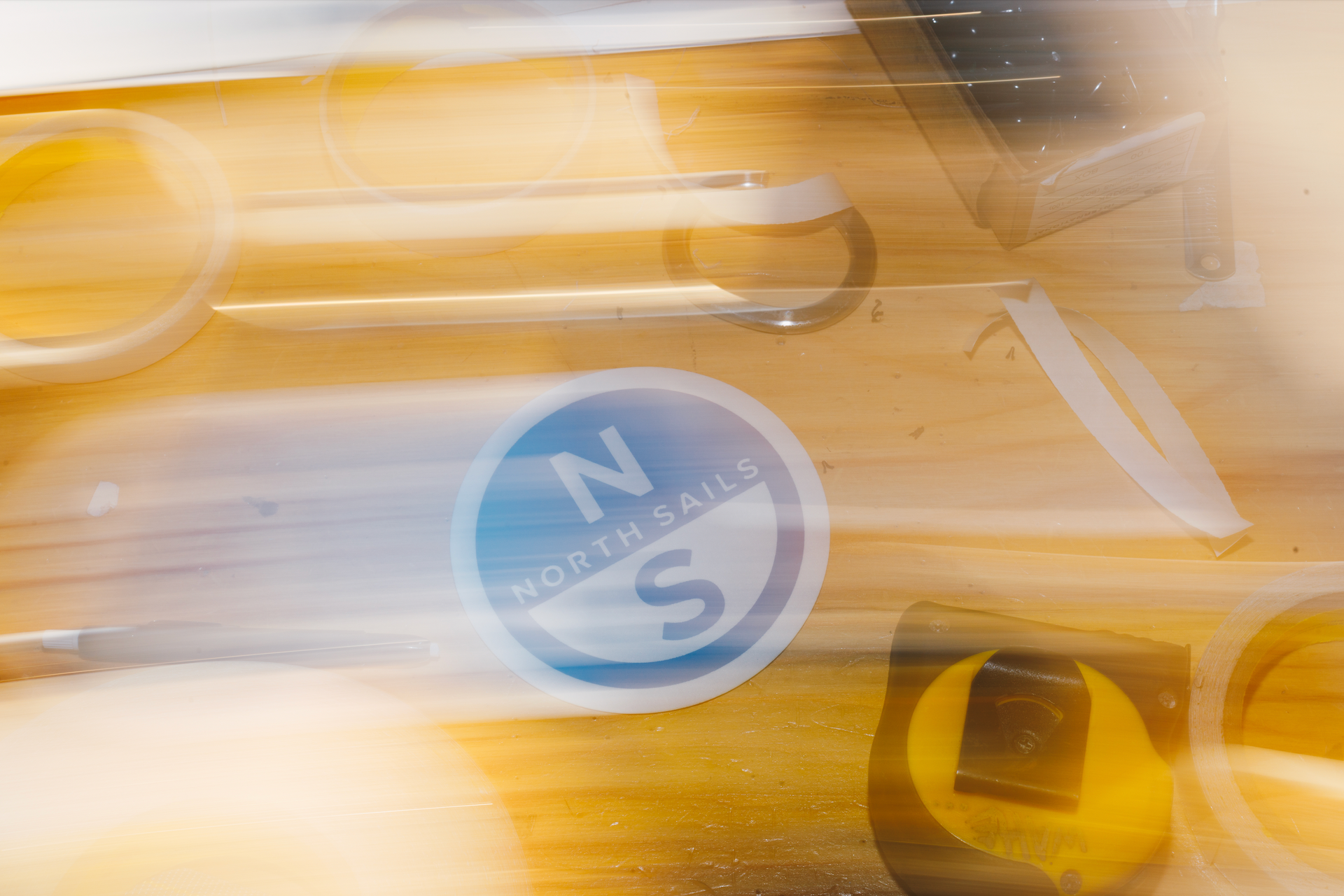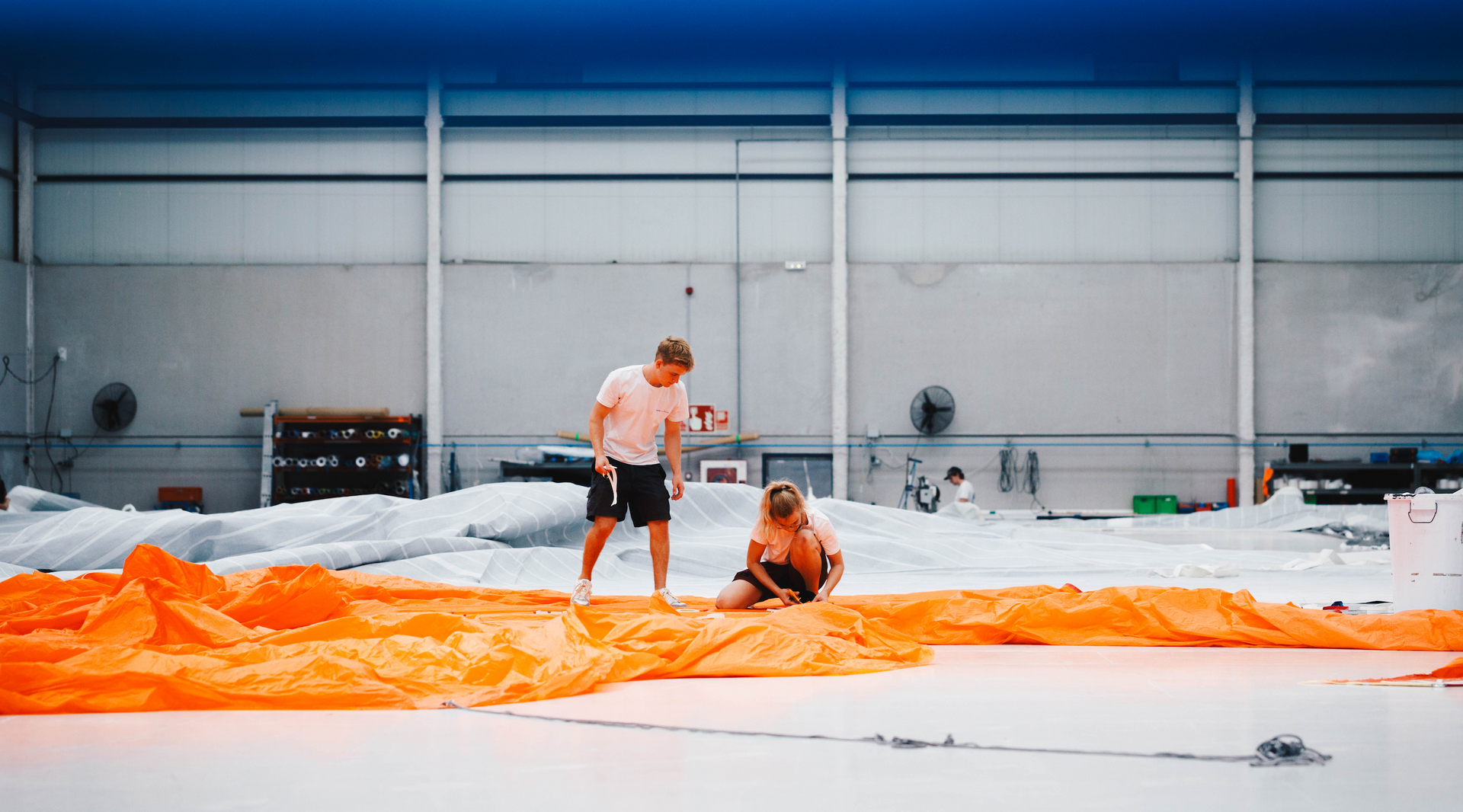HOW TO CARE FOR YOUR SAILS THIS WINTER
Global Service Manager Ben Fletcher Provides His Top Tips For Winter Sail Care

As we come to the end of the sailing season and head into winter, the North Sails global service team is gearing up for a busy period - from helping clients prepare for the Caribbean season, to packing boats away for a winter hiatus. Palma based, North Sails Global Service Manager, Ben Fletcher shares some of the best ways you can protect your sails.
"We pride ourselves on offering many services to our clients, all the way from the little Opti right through to the huge Tripp 85m, but they all have one thing in common – they need the best quality sails, kept in the best condition. North Sails Certified Service offers you the very best in care for your sails. Whether you race or cruise, there is no one more qualified to help you extend the life of your sails and maintain peak performance."
TOP 10 MAINTENANCE TIPS:
1. Avoid prolonged flogging of sails. Flogging and leech flutter can degrade a sail’s performance before its time. Minimize motoring into the wind with flapping sails. After hoisting sails, trim promptly and steer a course so the sails fill rather than flog.
2. Adjust your leech line to eliminate leech flutter (tension it just a touch more than necessary to stop the flutter). The tension needed will change as the breeze increases and as the jib sheet is adjusted. Do not over-tension the leech line; if the leech becomes hooked, ease it off. Proper placement of genoa cars will also prevent leech flogging on your genoa.

3. Use your sails in their designed wind ranges. If you don’t know the recommended wind ranges for your sails, contact your North sailmaker.
4. When leaving the boat, ease the jib halyard, main halyard, and outhaul to prevent permanent luff and foot stretching. Releasing batten tension also reduces distortion at the batten ends.

📸Urban Haglin
5. Limit exposure to the sun for extended periods of time. UV rays are one of your sail’s worst enemies. Roller furling genoas should have UV-resistant material covering the leech and foot. If you store your mainsail on the boom, make sure it is always covered when not in use.
6. Rinse your sails with fresh water and dry thoroughly before storing, to prevent mildew and color bleeding in spinnakers. Rinse fittings in fresh water to help prevent corrosion. Store dry sails in a well-ventilated location. And remember, making sure they are dry is as important as the initial rinse. Wet sails create mould issues. Our loft locations have large storage areas and can cater to any size of yacht for dry and secure sail storage.

7. Avoid folding sails on the same fold lines so that small creases don’t become permanent.
8. Regularly rinse sail bag zippers or lubricate with silicone spray.
9. Have your North Sails Certified Service expert inspect your sails at least once a season. Regular inspection will prevent small problems from becoming big ones. You can also ask your local loft to create an onboard sail repair kit for your specific sails.

📸Urban Haglin
10. Keep a sail log. Photographing your sails on a regular basis and logging the hours they are used will help you and your sailmaker evaluate your sail inventory seasonally. Your sail photos can also be digitized and analyzed using North’s SailScan computer program. Contact your local expert at your nearest loft for more details on how to help prolong the life of your sails.



























